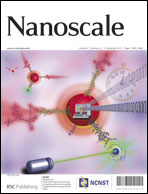Graphene–platinum nanohybrid as a robust and low-cost counter electrode for dye-sensitized solar cells†
Abstract
Dry plasma reduction (DPR) is an excellent approach for easily, continuously, uniformly and stably hybridizing platinum nanoparticles (Pt-NPs) on a graphene-coated layer under atmospheric pressure without any toxic chemicals and at a low temperature. The Pt-NPs with a size of 0.5–4 nm and mostly 2 nm were stably and uniformly hybridized on the surface of reduced graphene oxide (RGO) after co-reduction of Pt precursor ions and GO to Pt atoms and RGO, respectively. XPS analysis also revealed a repair of structural damage on the basal plane of the graphene as well as chemical bonding between Pt-NPs and RGO after DPR. Thus, the Pt-NPs/RGO nanohybrids applied to the counter electrode of dye-sensitized solar cells (DSCs) exhibited robust stability as well as ultrahigh electrochemical catalytic activity and conductivity using less than 1% of the Pt exploited for the Pt-sputtered counter electrodes. Thus, the Pt-NPs/RGO nanohybrid fabricated by DPR could be an excellent material for a robust and low-cost counter electrode for DSCs.


 Please wait while we load your content...
Please wait while we load your content...